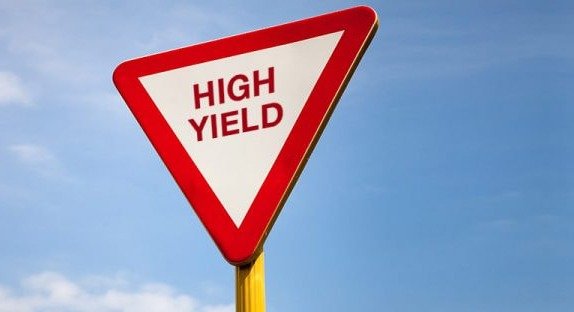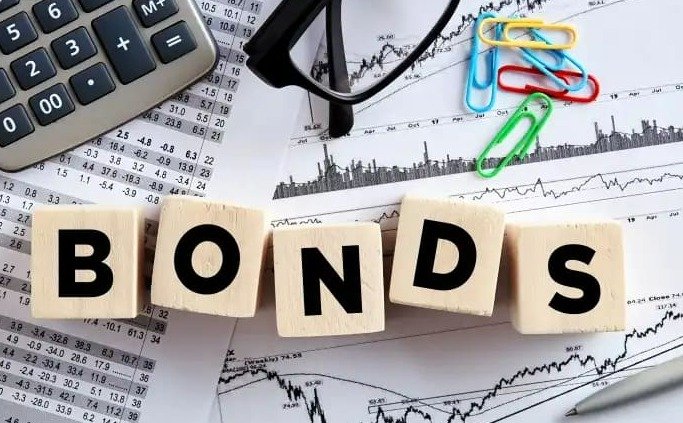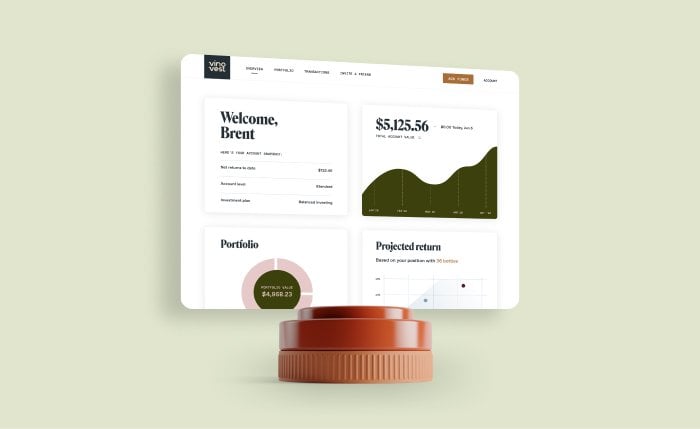Guide To Fixed Income Investments: Types, Pros & Cons
Did you know that the earliest recorded evidence of a fixed income agreement dates back to 2400 BC in modern-day Iraq?
Today, the global fixed income market is valued at around 126.9 trillion.
And there’s good reason.
Fixed income investments offer several attractive benefits, including a predictable income stream.
But what are the different fixed income investments, and how do they work?
In this article, we’ll answer those questions, including some popular fixed-income options, and the pros and cons of these investments.
We’ll also show you a great alternative investment - fine wine - to bolster your portfolio of fixed income investments.
Further reading
- Explore 11 intriguing Wine Investment Trends of 2022.
- If you’re curious about investment wines, explore the 10 Best Performing Wine Brands.
What Are Fixed Income Investments?

Fixed income is a broad term for investments that pay a fixed rate of interest or dividends until maturity. Once any of these fixed income securities reach maturity, you receive the principal amount you invested.
Fixed income investing involves putting money into government and corporate bonds, certificates of deposit, and more.
Investments like stocks may not pay out a cash flow. But, a fixed income product has the benefit of paying out the same amount, giving you a predictable income stream. This type of investment also typically involves lower risk.
Besides, you don’t have to be an accredited or institutional investor to invest in them – they’re open to everybody.
A financial professional may advise investors to shift their portfolios towards a fixed-income approach as they near retirement to benefit from the regular income.
How Do Fixed Income Investments Work?

Companies and governments issue debt securities to help raise capital to fund day-to-day operations or to finance a large project.
As an investor, you agree to loan this money in exchange for a set rate of return over a pre-defined period. Once that period is up, and the investment reaches its maturity date, you receive the original amount you invested.
For example, if you buy a 10-year bond with a value of $7,000, paying 4% interest, you’ll receive $280 a year for 10 years. You may receive these interest payments at various intervals, such as monthly, quarterly, or semi-annually.
Once those 10 years are up, you’ll have earned $2,800 in interest, plus you’ll receive the original $7,000 you invested.
Though it’s worthwhile pointing out that these interest payments will be taxed as income, but there are some exceptions.
You have several investment options when it comes to fixed income investing. Let’s look at these in more detail.
Types Of Fixed Income Investments
There are several types of fixed-income investments. Here are some of the popular investment options:
1. Treasury Bonds

A treasury bond is issued and backed by the US government. As such, the risk of default is virtually nonexistent. This fixed income product represents the bulk of the US fixed income market.
These fixed income securities come in three forms, with the maturity date being the biggest difference:
- Bills: 1 month to a year
- Notes: between 2 and 10 years
- Bonds: 20 or 30 years
2. Municipal Bonds

A municipal bond is very similar to a treasury bond, but state and local governments issue these bonds. They function like treasury bonds but come with one major benefit: the income is exempt from federal tax.
However, they generally offer lower returns than other types of bonds but can still form an important part of a fixed income strategy.
3. Corporate Bonds

A corporate bond is one step up from treasury and municipal bonds in terms of risk and reward. These are similar to other bonds, except you’re loaning money to a business, not the government.
4. High Yield Bonds

Also known as junk bonds, these are the riskiest types of bonds. They’re securities issued by companies that don’t qualify as investment grade by bond rating agencies.
As such, high yield bonds are more likely to default than investment grade bonds.
When a company defaults, it fails to pay back the interest and principal on a bond or debt security.
Depending on your investment objective, they can form a solid part of your fixed income strategy. They offer a higher yield from better interest payouts in exchange for the increased risk.
5. Bond Funds

Bond funds are a type of fixed income fund. While it's possible to invest in the abovementioned bonds individually, a bond fund allows you to invest in several bonds at once.
There are several different kinds of fixed income funds, including:
- Bond mutual funds: A mutual fund is basically a pool of investments consolidated from a group of investors. A bond mutual fund is simply one that invests in bonds. It could contain one type of bond (like a corporate bond, for example) or a variety of bonds. Some fees are associated with a bond mutual fund, so be sure to find one that suits your needs.
- Closed-end bond funds: A closed-end bond fund is a type of mutual fund, except that it issues a fixed number of shares. You can buy and sell these shares on a stock exchange. Many municipal bond funds are closed-ended funds. One thing to note is that this type of fixed income fund may be leveraged. In other words, the fund may issue or purchase investments using debt, increasing the risk.
- Bond ETFs: ETFs (exchange-traded funds) are similar to mutual funds but can be bought and sold like stocks. Bond ETFs may track the performance of one specific bond index or be actively managed by a fund manager with a particular investment strategy in mind.
- Bond unit investment trust: A unit investment trust (UIT) is a company that offers a fixed portfolio of investments. A bond UIT offers a fixed portfolio of bonds. The bonds held by the trust will rarely change, making it easier to calculate your expected returns. Once the trust reaches its maturity date, the portfolio is liquidated, and you receive the proceeds in proportion to your investment amount.
Next, let’s look at some benefits and drawbacks of fixed income investments.
Pros and Cons of Fixed Income Investments

Here are the advantages and disadvantages of investing in a fixed income security:
Pros
Fixed income investors can benefit from numerous advantages, including:
- Portfolio diversification: Since fixed income assets are typically less sensitive to economic downturns and geopolitical events, they tend to be less risky than stocks. Bonds also tend to move inversely to stocks, partly because bonds are seen as a haven when stocks are volatile. So these assets are worth considering during portfolio construction.
- Regular Income stream: One of the biggest benefits is the predictable income stream. Fixed income investments offer a steady stream of income over the asset's life. And, in the case of a municipal bond, income is federal tax-free.
- Capital preservation: A fixed income security is excellent for preserving the value of your investment since it tends to carry less risk. However, bear in mind that these investments are sensitive to interest rate fluctuations, which can cause your assets to lose value over time.
Cons
Fixed income investors should also be aware of some potential pitfalls:
- Interest rate risk: This is one of the main drawbacks. When interest rates rise, the bond price falls, meaning the value of the bond falls. Interest rate movements are some of the main causes of bond volatility.
- Credit risk: It's crucial to consider the lender's creditworthiness and the likelihood of the borrower repaying their debt. If the issuer declares bankruptcy, the repayments will stop. You’ll lose your entire investment, including the principal.
While the credit risk is much lower with a government bond, it’s worth keeping in mind when investing in corporate bonds. Junk bonds can pay you more interest than investment grade bonds, but they are more likely to default.
- Inflationary risk: Bonds are particularly susceptible to rising inflation rates. Inflation is the rate at which prices rise in an economy. If inflation begins outpacing the bond’s income, it eats away at your return.
- Potentially lower returns: Their relative safety means fixed income investments often earn lower returns. Sound investment advice from a financial professional would be to allocate a greater percentage of your portfolio to risker assets like stocks and gradually shift towards bonds as retirement approaches.
Since 1926, the average annual return of a government bond has been between 5% and 6%. Stocks have done a little better, producing an average of around 10%.
Fortunately, it's relatively easy to counteract these shortcomings by diversifying with a reliable alternative asset.
Let’s take a look at one particularly well-performing alternative asset.
Fine Wine: An Excellent Addition To Your Portfolio

Here are some benefits of adding fine wine to your portfolio:
- Steady returns: Fine wine has a long history of providing excellent returns. Since fixed income investments don’t always offer the greatest earnings, you can bolster your potential returns with wine.
Fine wine has delivered annualized returns of 13.6% over the last 15 years. More recently, the first half of 2022 saw the S&P 500 lose about 20% of its value. The Liv-ex Fine Wine 1000 reported the opposite, up 10% as of July.
- Diversification: Fine wine has a minimal correlation to traditional investments like stocks and bonds, making it ideal for protecting against market volatility.
The Covid-19 pandemic illustrated this perfectly. The Dow Jones slumped over 20% in the first quarter of 2020. The Vinovest 100, a proprietary index tracking 12 fine wine markets worldwide, grew by 1%.
- Inflation and recession-resistant: Wine is also a solid choice for counteracting the effects of inflation on your fixed income investments. Since it’s a tangible asset, much of its performance depends on supply and demand. It’s also proven to be an efficient hedge against recession.
The Covid-19 pandemic wreaked havoc on the S&P 500, leading to a decline of 19.6%. Fine wine, on the other hand, only lost 1.4%.
Now, what’s the easiest way to invest in fine wine?
Invest in Wine Bottles through Vinovest

While wine investing was once reserved for the institutional investor or the wealthy with decades of experience and industry connections, that’s no longer the case.
Today, fine wine is an excellent asset to include in your portfolio construction.
Vinovest has opened this lucrative asset to every individual investor. Thanks to this wine investment platform, everyday investors can buy, store and sell some of the world’s most coveted wines without worrying about the nitty gritty.
If you’d like to get started with Vinovest, here’s a quick rundown of the process:
- Step 1: Begin by creating an account. Fill in some basic info about yourself, followed by a short questionnaire. This will help Vinovest better understand your investment objective, risk tolerance, and time horizon.
- Step 2: Fund your account. The minimum balance is $1,000. You can use a bank transfer, credit card, debit card, wire transfer, cryptocurrency, or a paper check to make the transfer.
- Step 3: Build your portfolio. After you’ve funded your account, Vinovest’s experts will suggest the best wines for your portfolio based on proprietary data.
- Step 4: Vinovest safeguards your wine. Vinovest handles all the hard work, including authentication, shipping, storage, insurance, and proof of ownership.
- Step 5: Enjoy a glass of wine while your portfolio grows. You’ll have access to your portfolio in real-time, so you can see it growing as it happens.
Benefits of investing with Vinovest
Here are some of the perks of investing with Vinovest:
- Tax advantages: Vinovest stores your wine in bonded warehouses that charge no excise duty or VAT.
- Liquidity: Vinovest has an extensive network of wine traders and merchants, allowing you to sell your wine whenever you want.
- Complete ownership: When investing with Vinovest, you retain 100% ownership of your bottles.
- Purchased from the source: Vinovest sources all wines directly from wineries, wine exchanges, and merchants to ensure market transparency.
- Worldwide shipping: Vinovest will ship them straight to your door if you want to uncork your wines, or to your buyer when you want to sell it.
Fixed Income Investments And Fine Wine: An Ideal Pairing for Your Portfolio

Fixed income funds are an excellent option for preserving capital while offering a predictable income stream.
However, they’re considered relatively safe and don’t provide astronomical returns. The bond price is also particularly susceptible to inflation and interest rates.
Fine wine can form part of a solid investment strategy by counteracting these shortcomings and boosting your potential returns. With a history of providing solid earnings, even during economic downturns, fine wine is a great way to help solidify your portfolio.
What’s more, you don’t need to be a sommelier. Vinovest has made investing in the world’s best bottles available to each individual investor.
So why wait?
Sign up with the platform today – your portfolio will thank you.



